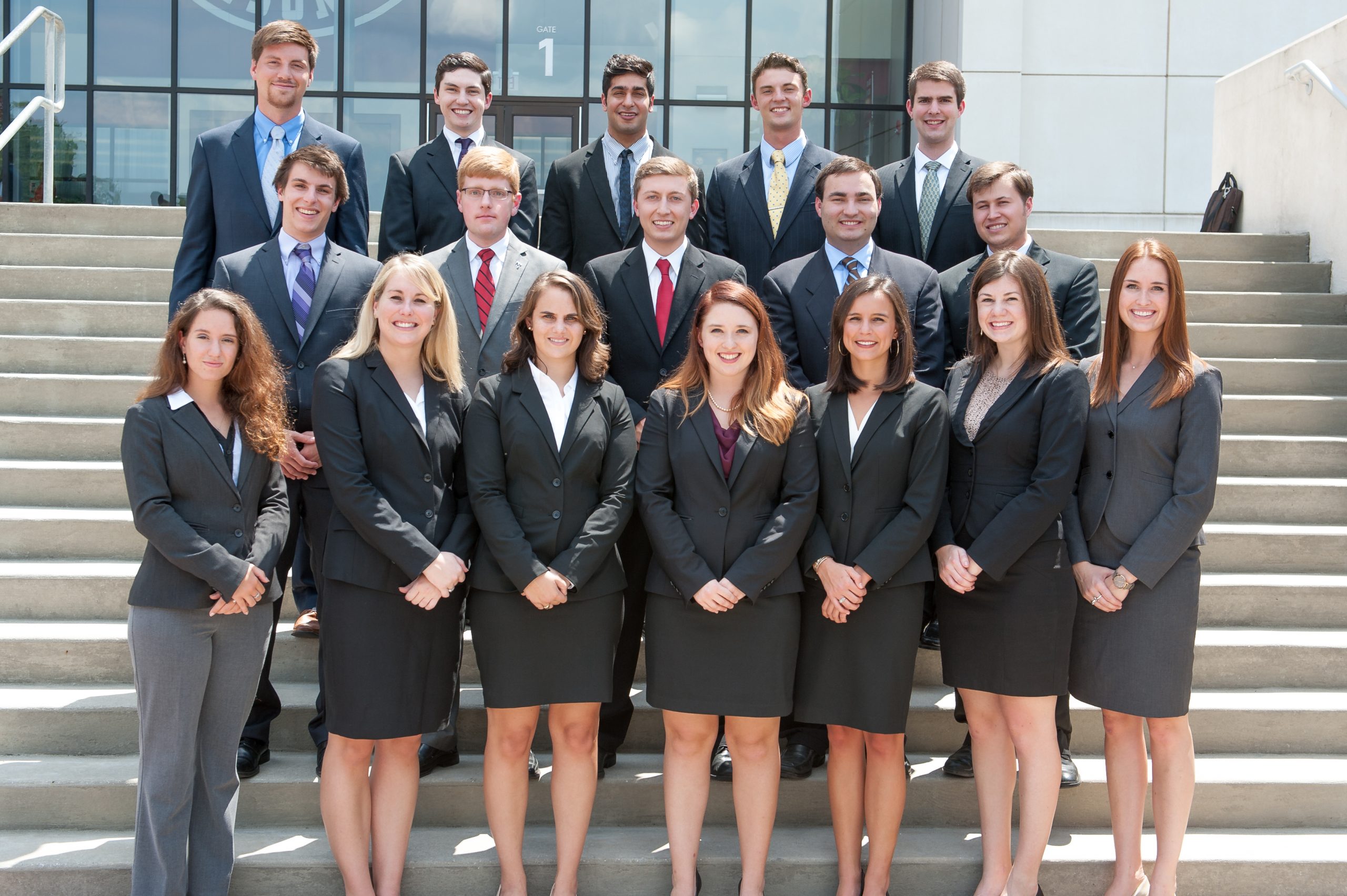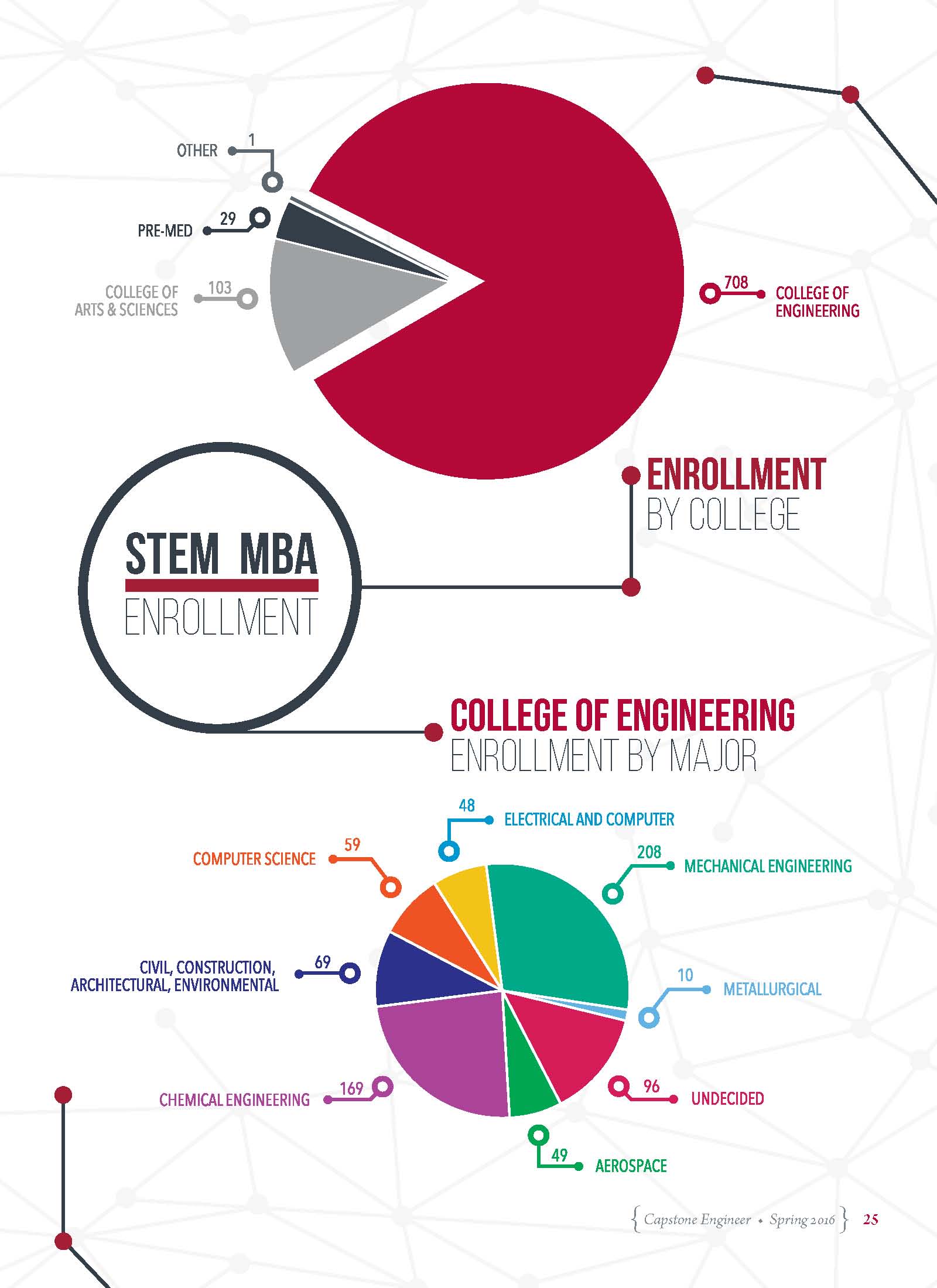
The STEM Path to MBA Program based in the UA Culverhouse College of Commerce graduated in 2016.
Five years ago an ongoing conversation in The University of Alabama’s Culverhouse College of Commerce launched a unique program aimed at helping students studying the sciences and engineering gain experience with business before graduating.
Called the STEM Path to the MBA, students in the program earn a bachelor’s of science and a master’s of business administration within five years, along the way getting the chance to work as a group on entrepreneurial experiences. From group competitions sponsored by the National Institutes of Health to hearing internationally renowned speakers, participants do much more than acquire dual degrees.
Since the first class was admitted in 2011, candidates have spent their spare time developing new products (multiple patents pending), engaging in philanthropic-focused development (students worked in India this past summer) and cultivating business sense and ethics from the start of their college career.
The first class of students came in fall 2011, and, this year, 14 who stuck with the program are the first to graduate. Of those, 12 had accepted jobs before graduation with prestigious companies, such as Brasfield & Gorrie, Cigna- HealthSpring, Alabama Power, AT&T, SAS, Acuity, IBM and the federal government.
“This is the only program of its kind in the nation,” said Dr. Rob Morgan, director of the STEM Path to the MBA program. “Other programs have separate STEM and MBA programs, but ours is the first to combine the two and keep the students in the same cohort throughout college. We are excited to see the first class graduate.”
This year there are 841 students, from freshman year to the MBA year, in the program. About 84 percent are from the College of Engineering.

“The students who participate are presented with terrific opportunities, and I believe have a great academic experience,” said Dr. Charles L. Karr, dean of the UA College of Engineering. “Our approach has been to try to provide students with a wide array of opportunities from which they can select to ultimately accomplish their career goals. We are delighted to work cooperatively with Culverhouse on this fantastic program.”
Innovative solutions are exactly what Morgan, a Phifer fellow and the Culverhouse executive director for innovation initiatives, imagined when, as a marketing professor, he conceived an effort tying science-technology careers with higher-level business skills.
Morgan discussed the intersections of science, technology and business education with then-associate dean of the Culverhouse College of Commerce, Dr. Mike Hardin. As the two considered how to better prepare the MBA students in the Manderson Graduate School of Business for current corporate challenges, they remembered the degree’s origins.
“The STEM Path to the MBA has absolutely proven to be a phenomenal program.”
– Kent Darzi, ADTRAN.
“The MBA was originally designed for engineers back in the 1940s and 1950s, who had been out working for a few years and were being promoted into managerial positions, or for those who wanted to get into a management track,” Morgan said. “The American MBA was designed for the person who didn’t have a business undergraduate degree.”
Although that emphasis shifted in subsequent decades, American industry again faces technology-fueled international pressures. Science- and math-related innovators must understand how their solutions light be managed, financed and marketed, whether their expertise is software engineering, infrastructure or health care.
UA’s STEM program has drawn national attention. When Morgan visited the office of Procter and Gamble’s William Gipson, senior vice president of global diversity and research and development, Gipson greeted Morgan by saying, “You know what you guys are doing is revolutionary, right?
“The feedback we get from employers, paraphrased, is, ‘This is exactly the kind of people we want to hire,’” Morgan said. “They want their engineers to understand the business impact of what they do.” Kent Darzi is one of those employers. As director of engineering at ADTRAN, Darzi is another executive who makes time to sit on Culverhouse’s STEM-MBA advisory board.
“The STEM Path to the MBA has absolutely proven to be a phenomenal program,” said Kent Darzi. “It has paid off in spades, attracting highly motivated, energetic students who will come from anywhere to participate. This is a very attractive way of differentiating The University of Alabama as a competitor in the global academic market.”
Material from the Executive Magazine published by the UA Culverhouse College of Commerce was used in the article. Jean M. McLean is a writer for the magazine, Edith Parten, is communications director for Culverhouse.